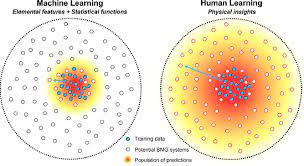
In a variety of domains, including consumer behavior, speech recognition, medication development, and facial and facial expression identification, machine learning (ML) has been applied with astounding effectiveness. It has, however, had very sporadic success when used as a technique to create bulk metallic glass.
To determine why this is the case and how to develop ML models that generate more accurate predictions about glass formation, a research team under the direction of Prof. Jan Schroers set out. Acta Materialia publishes their findings.
Given their combination of superior metal strength and plastic pliability, metallic glasses have the promise of being used in a wide variety of industries. Finding the ideal components to create metallic glasses has, however, taken a lot of time. Due to their distinct atomic structures, metallic glasses do not crystallize like ordinary metals do when they cool from a liquid to a solid. Instead, their atoms settle into a random pattern. However, the glass-forming ability (GFA), which refers to how simple it is to convert a metal or alloy into a glass, is complicated and little understood.
ML models have shown multiple examples of correct predictions at minimal cost and further led to the discovery of materials with unconventional chemical compositions at an accelerated rate. Some sorts of materials discovery entail relatively few atoms.
But predicting an alloy’s capacity to make glass is a far trickier issue. Despite anticipation that machine learning (ML) could be helpful to handle such complex challenges, it has so far considerably underperformed compared to human-learning based models.
They discovered that the model needed to incorporate more physical knowledge. This means that understanding the properties of the materials involved is not sufficient; the model also needs to show how those properties relate to one another. For instance, incorporating information about the proportion of the smallest to the largest element in an alloy could significantly enhance the outcomes.
Professor of mechanical engineering and materials science Schroers remarked, “Even if we supply very little physical knowledge in developing the machine learning model, the output is considerably better. “Machine learning must be combined with some human learning, or else the predictions made by ML are virtually useless.”
Shakespeare isn’t described if someone reads Shakespeare and says, “Oh, he uses a lot of the letter P and also the letter S.” “How, though, did Shakespeare combine them? The gap there is that. The predictions are much more effective than just the letters themselves (in identifying and mimicking Shakespeare) when you understand how he arranges the letters just a little bit.”
Read More
- This is the more sophisticated sensor detects target gases
- New “Smart Inverters” May be Vulnerable to Cyberattacks – Researchers Say
- Researcher Develops New Method of Recycling Urine – They Realized that Current Toilet Technology Flushes Profits.
- How Engineers Have Improved Solar Cell Efficiency and Stability
